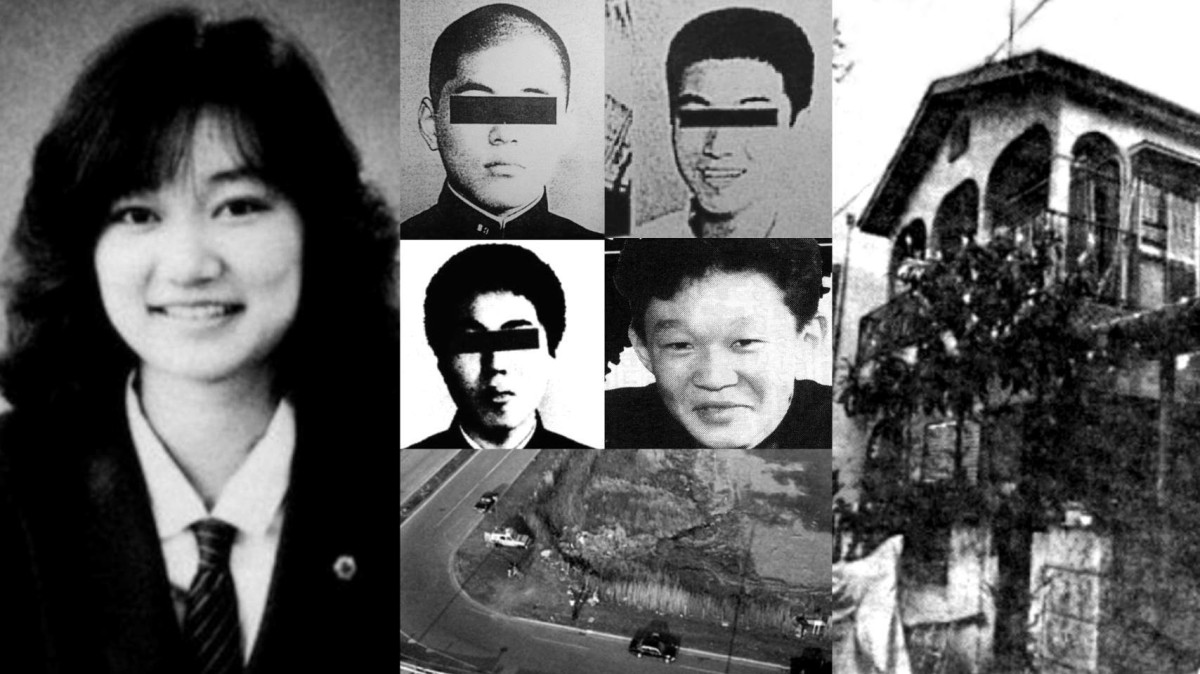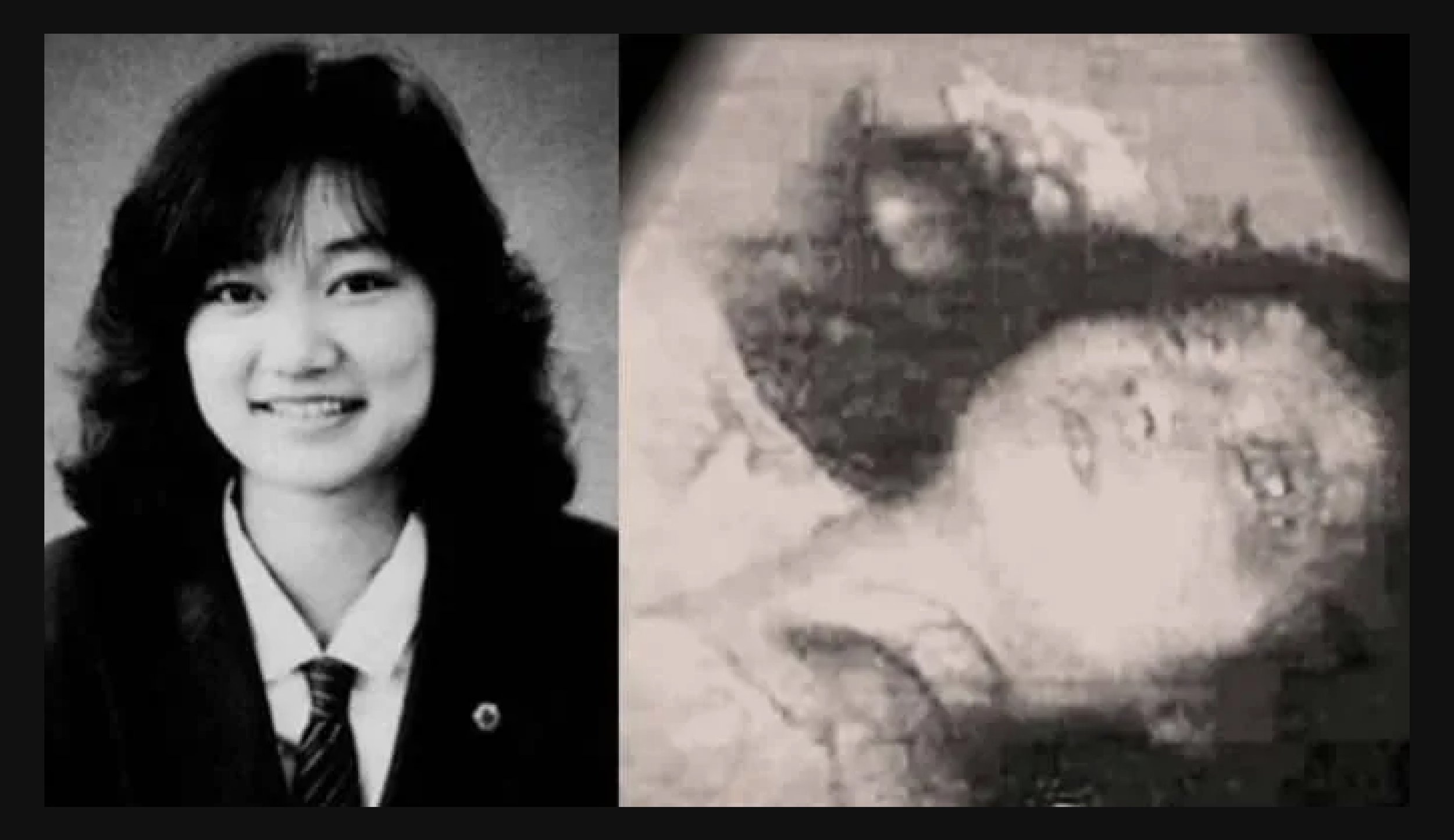Can true evil exist, and if so, can it be visited upon the innocent? The story of Junko Furuta, a Japanese schoolgirl, is a chilling testament to the darkest aspects of human nature, a tragedy that continues to resonate decades after the events unfolded in Misato, Saitama Prefecture.
Born on January 18, 1971, Junko Furuta was a typical teenager. She lived with her parents, an older brother, and a younger brother. Her life, however, was tragically and brutally cut short. In 1988, at the tender age of 17, Junko was abducted. What followed was a period of unimaginable suffering, a 44-day ordeal of torture, rape, and abuse perpetrated by four teenagers, Hiroshi Miyano, J Ogura, Shinji Minato, and Yasushi Watanabe. Their actions culminated in a crime so horrific that it has left an indelible stain on Japanese history and continues to shock the world.
| Category | Details |
|---|---|
| Full Name | Junko Furuta |
| Date of Birth | January 18, 1971 |
| Place of Birth | Misato, Saitama Prefecture, Japan |
| Age at Death | 17 years old |
| Education | High School Student |
| Circumstances of Death | Kidnapped, tortured, raped, and murdered |
| Date of Kidnapping | November 25, 1988 |
| Date of Death | January 4, 1989 |
| Place of Death | Kt, Tokyo, Japan |
| Perpetrators | Hiroshi Miyano, J Ogura, Shinji Minato, Yasushi Watanabe |
| Legacy | Symbol of extreme violence and injustice, subject of numerous films and books, catalyst for conversations on violence against women and the juvenile justice system. |
| Reference | Wikipedia - Murder of Junko Furuta |
The details of Junko Furuta's ordeal are almost too horrific to comprehend. For 44 agonizing days, she was subjected to relentless physical and sexual abuse. She was beaten, raped repeatedly, and deprived of basic necessities. Her captors, fueled by a depraved sense of power and a complete disregard for human life, escalated their brutality over time. The torture included cigarette burns, forced consumption of harmful substances, and a litany of other sadistic acts. The psychological torment was equally devastating, as Junko was held captive in a state of constant fear and despair. Eventually, on January 4, 1989, after weeks of unspeakable suffering, Junko Furuta succumbed to her injuries. Her battered body was discovered encased in concrete inside a drum in Kt, Tokyo, a final, devastating act of dehumanization.
- Subhashree Sahu Mms Scandal A Deep Dive Into Privacy Ethics
- Cristoferideas Sondra Insights Analysis A Deep Dive
The case quickly gained international attention, sparking outrage and condemnation. The brutality of the crime, coupled with the youth of both the victim and the perpetrators, shocked the world. The media covered the case extensively, detailing the horrific acts committed against Junko and the perceived failures of the justice system. The case, often referred to by its Japanese name, ( - Joshiksei Konkurto Zume Satsujin Jiken - "Concrete-Encased Murder of a High School Girl") became a symbol of extreme violence and the darkest aspects of human nature.
The legal ramifications of the Junko Furuta case were controversial. Due to their ages at the time of the crime, the perpetrators were tried as juveniles. While they were found guilty of their heinous acts, the sentences they received were widely criticized as lenient. The lenient sentences underscored perceived flaws in the Japanese juvenile justice system, prompting discussions about accountability and the need for more severe punishments for violent crimes committed by young offenders. An article published in Shukan Shincho in September 2018 highlighted the subsequent arrests of the three convicted killers, describing them as a defeat of the juvenile law.
The case of Junko Furuta transcends the boundaries of a mere criminal case; it is a chilling reminder of the potential for human cruelty. The case is not only a tale of human suffering but also a stark illustration of how severe trauma can potentially alter the very structure and function of the brain. While direct examination of Junkos brain is impossible, her case provides a tragic framework for understanding the potential neurological impact of extreme and prolonged abuse. The systemic failures and the challenges of rehabilitation further complicate the narrative, highlighting the complex issues surrounding juvenile justice and the aftermath of such heinous crimes.
- Kandcom Unveiling The Viral Sensation Its Impact
- King Von Autopsy Understanding The Controversy Impact
The aftermath of the case, while filled with grief and outrage, also spurred societal dialogue and reflection. Her story has been the subject of several books, films, and manga, each attempting to grapple with the unspeakable events and their profound impact. The film "Concrete", released in 2004, offered a dramatization of the events, focusing on the perpetrators and the environment that allowed the crime to occur. More recently, the 2017 film "Junko," directed by Abhinav Thakur, provided another cinematic exploration of the tragedy.
The case raised significant questions about the countrys justice system, sparking crucial conversations about bullying, violence, and the treatment of women and juveniles within society. The legal fallout from this case has raised important questions about the countrys justice system while the societal impact of the case has sparked crucial conversations about bullying, violence, and the treatment of women. The crime has left an indelible mark, highlighting the darkest corners of humanity and the terrifying potential for evil that can exist within individuals and within society. The case of Junko Furuta has not been forgotten, it remains a tragic reminder of the importance of empathy, justice, and the need to protect the most vulnerable members of society.
The brutal slaying of Junko Furuta left an enduring legacy, serving as a catalyst for change and a reminder of the importance of speaking out against violence and abuse. It spurred a national conversation about the need for legal reform, increased awareness of the issue of violence against women, and emphasized the importance of breaking the cycle of violence. Junko Furuta's tragic story reminds us of the importance of speaking up against cruelty and injustice. Her ordeal has inspired many to advocate for victims of violence and abuse. The case of Junko Furuta has raised awareness about bullying and violence against women. The diligent pursuit of their investigation by the police could have brought an earlier end to the unimaginable ordeal suffered by Junko Furuta.
The enduring legacy of Junko Furuta's murder is a testament to the power of remembrance and the importance of advocating for change. While the perpetrators were brought to justice, the sentences they received were viewed as lenient, sparking conversations about the justice system and its treatment of juvenile offenders. The case has served as a catalyst for increased awareness of violence against women, bullying, and the need for legal reform. It serves as a grim reminder of the dark corners of human cruelty.
The events surrounding the kidnapping, torture, and murder of Junko Furuta in 1988 continue to horrify and captivate people around the world. The case draws attention for its brutality, the young age of the victim, and the perpetrators involved. It has left an indelible mark, highlighting the darkest corners of humanity, and terrifying. The crime has left an indelible mark, highlighting the darkest corners of humanity and the terrifying. The story underscores the importance of speaking out against cruelty and injustice, advocating for victims, and working towards a society where such atrocities are not allowed to occur. It is a story that remains unsolved in many ways, as questions about justice, accountability, and the potential for evil in the human heart continue to be asked and debated.
The death of Junko Furuta, a teenager whose life was tragically cut short, serves as a stark reminder of the devastating consequences of violence and abuse. The case's notoriety stems not only from the heinous nature of the crimes committed but also from the systemic failures and societal factors that allowed such atrocities to take place. Had the police officers conducted a comprehensive search of the Minato residence, there remains the possibility that Junko Furutas life could have been saved. Upon arrest, all four defendants pleaded guilty to committing bodily injury that resulted in death rather than murder. This allowed for surprisingly lenient sentences due to Japanese law at the time regarding juvenile offenders.
The cases continued relevance highlights the need for ongoing discussions on issues of violence, abuse, and the importance of protecting the vulnerable. The fact that the case has inspired films, books, and other forms of media demonstrates its enduring impact and serves as a powerful reminder of the importance of seeking justice for victims and working to prevent such tragedies from happening again. The Junko Furuta murder case stands as one of Japan's most shocking and tragic criminal incidents, drawing attention worldwide for its brutality and the young age of the victim involved. The case of Junko Furuta is not just a tale of human cruelty; its a stark illustration of how severe trauma can potentially alter the very structure and function of the brain. It will shock you what little retribution was handed out for their brutal slaying of Junko.
The case remains one of the most shocking and heartbreaking criminal cases in the history of Japan. The legal fallout from this case has raised important questions about the countrys justice system, while the societal impact of the case has sparked crucial conversations about bullying, violence, and the treatment of women. The story of Junko Furuta serves as a powerful warning against indifference, a reminder of the importance of speaking out against injustice, and a call to action to create a society where such horrors are never allowed to happen again.
- Viralkand Your Ultimate Guide To Viral Content Mastery
- Martin Kretz Divorce Rumors Updates Lagence Star Split

.jpg?format=2500w)
